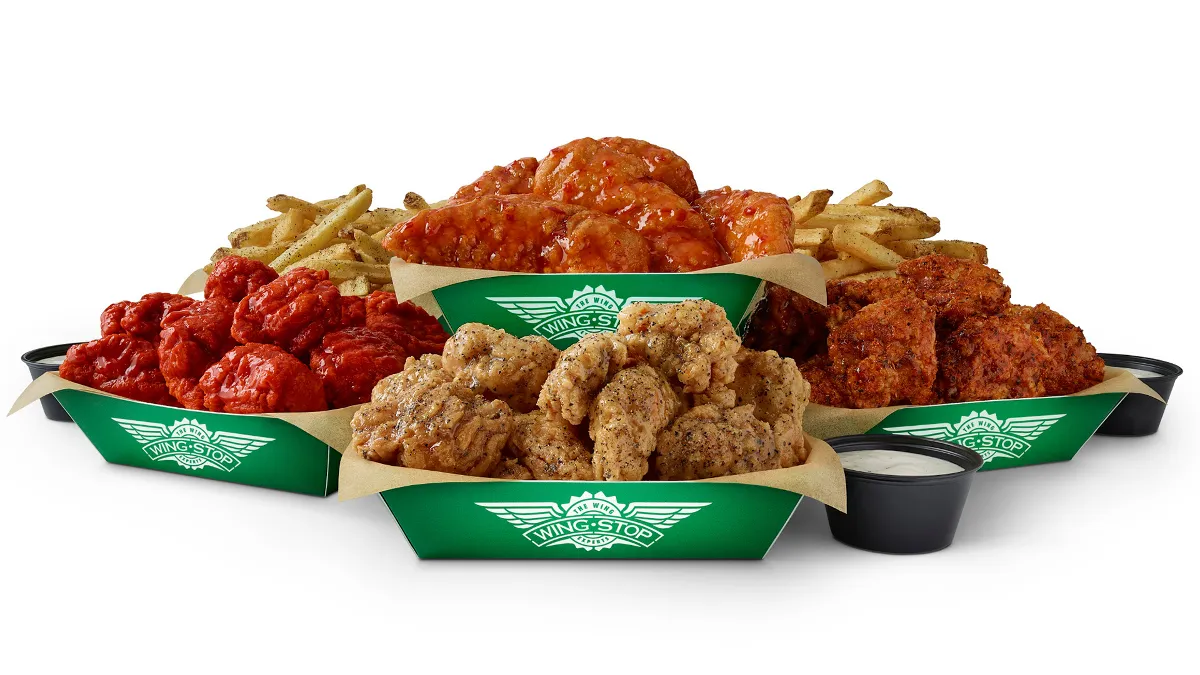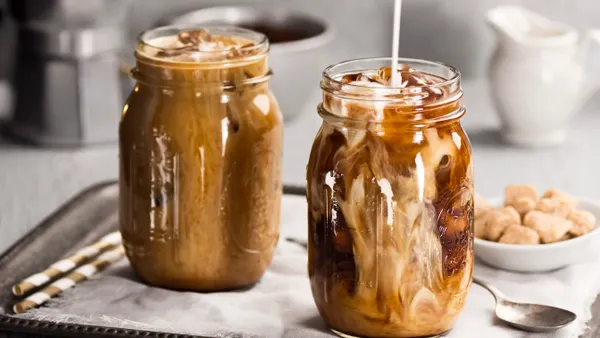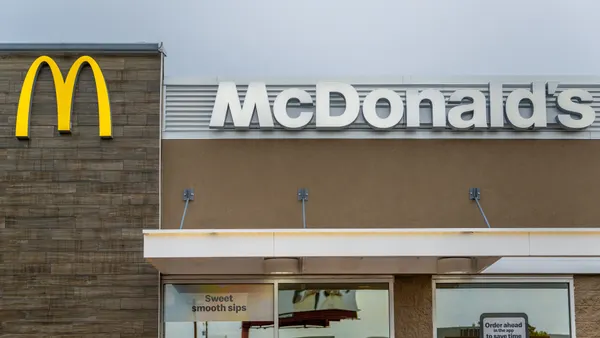Dive Brief:
- Wingstop has seen a decrease in overall food costs, driven by a 19% reduction in bone-in wing prices, CFO Alex Kaleida said Thursday during the company’s second quarter earnings call.
- The company expects food costs for its franchisees to be near the midpoint of its targeted 34% to 38% range, which would be an 800 basis point improvement compared to the second half of last year. Company-owned restaurants are expected to see 38% food costs.
- Frozen wing inventory is nearing 2018 levels and record breast meat prices are motivating suppliers to increase production, Kealeida said. Because of this, Wingstop is confident it will see a favorable commodity outlook for the rest of 2022 and heading into 2023.
Dive Insight:
While other brands are forced to raise prices to manage margins as commodity costs increase, Wingstop is in a unique position: it doesn’t need to change menu prices this year. Brands like Chipotle and McDonald’s are among the biggest chains to increase prices so far.
“Wingstop is a year ahead of other brands,” CEO Michael Skipworth said Thursday. “We navigated record wing inflation in 2021 and our brand partners took the appropriate level of pricing that year to navigate that inflation and manage margins.”
Last year, the company shouldered record-high bone-in wings prices, around $3.22 per pound, which dropped to $1 per pound earlier this year. This deflation, along with its strong AUVs — about $1.6 million — have resulted in robust cash flow for Wingstop’s franchisees, Skipworth said.
The company is also able to lean more heavily on value items due to this deflation, Skipworth said.
Early in the second quarter, the chain launched a $15.99 meal deal with 20 boneless wings, four flavors, two dips and a large fry. The meal deal became the company’s highest-mixing bundle, accounting for 7% of Wingstop’s sales mix, Skipworth said. Wingstop is also piloting a “triple meal deal” that will include classic wings, boneless wings and tenders, he said.
Customers visit Wingstop on average three times per quarter, as consumers view the brand as an indulgence, Skipworth said.
“Presenting guests with value both in the form of price point with a bundle like the boneless meal deal and with that high-quality, made-to-order Wingstop experience positions us well to retain those indulgent Wingstop occasions,” Skipworth said.
Last quarter, the company also presented a strategy to take control of its supply chain to provide more predictable food costs for its franchisees. The strategy included evaluating how Wingstop contracts with supply partners, and finding ways to vertically integrate supply. Wingstop considered acquiring or building a poultry processing complex that it could sell to a franchisee co-operative.
The company is still exploring its options. It’s currently in active conversations with potential targets to see if they are the right fit to create a vertically integrated system. Wingstop has raised some capital and has room on its balance sheet to pursue opportunities if they crop up, Skipworth said.
“Just by us talking about that more publicly, the dynamic of the conversation with our suppliers is really evolved and we're making a lot of exciting progress around how do we contract differently, how do we get away from the spot market, and how do we deliver a much more predictable... food cost for our brand partners and their P&L,” Skipworth said.















